FavRoute Itinerary of :
Nizams Runner
919 enquiries 0 followers 1168 views 0 driversIncluded are : Stay, Meals, Activities, *Base Price : Rs.1500/ pax / dayPackage Price : Rs.3000/ pax / dayThis trip can be availed as a package or at Base Price.Trip plan type : Flexi Plan*Days - 8 -- Nights - 7.
Total travel distance : 946-Kms..
Min Pax - 3 -- Max Pax - 4
Sends a WhatsApp msg with your interest to the trip owner.Call the trip owner.Start point atA - Rajiv Gandhi International Airport (HYD),Hyderabad, TG
End point atK - Rajiv Gandhi International Airport (HYD),Hyderabad, TG
Share on your social media
Day : 1 - Historical Bidar
Night stay at B1 - Bidar, Karnataka, India
Distance from days start -158 Kms.
Star Rating of Hotel :



Halt B1 - Bidar, Karnataka, India
Distance from days start -158 Kms.
Activities - Bidar Fort, Narsimha Jhira cave temple, Brahmani Tombs, Chaubara
Factors at the Halt include : Spiritual.
Just a a 3 hour drive from Hyderabad will take us to Bidar, the head quarters of Bidar district in the extreme northern most part of Karnataka state. The city is well known for its many sites of architectural, historical and religious importance. To cover the sights in Bidar by allocating a fair amount of time to each we will stay back in the city for the day. We shall begin with the most important sight of them Bidar Fort complex, which was build by Sultan Alla-Ud Din Bahman of the Bahamani Dynasty when he shifted his capital from Gulbarga to Bidar in 1427 and built the fort along with a number of Islamic monuments. There are over 30 monuments inside the sprawling complex of Bidar fort. The fort is 1.21 km long by 0.80 km in breadth. The fort walls measure 2.5 km on the outside, and include within numerous buildings, arches, pavilions, mosques, gateways and gardens. To the north and east, steep cliffs provide natural protection to the moat and the glacis; elsewhere, facing Bidar city, from the south-east to the south-west. With in the complex is situated a no of monuments and palaces like Rangin Mahal, Gagan Mahal, Takhat Mahal, etc. After that we shall visit the Brahmani tombs, the tombs of the Bahmani dynasty. There are eight tombs of the Bahmani rulers. The inscriptions of the tomb reveal the name of the king, his date of accession, and date of death. Persian poetry and Quranic verses are also inscribed. Then there is the Chaubara tower which is set within the city itself. The grandiose Chaubara tower is anchored at the junction of two major thoroughfares of the city.
This fort is colossal with a 71 feet single cylindrical figure. The tower must have been the watch fortification of Bidar in olden days. Style of this tower is purely Islamic and is believed to be a replica of a tower in Sammara mosque. A circular base with a girth of 180 feet and 16 feet 9 inches tall forms the strong base for this bulky tower. This base is carved with many arched niches which serve as the resting spot for the pedestrians till now. The apex of the tower is adorned on all four sides with sizable clocks. An archaic steel staircase spirals inside the tower and ceases at the open space of the terrace. Towards the later half of the day we shall visit the Narsimha Jhira Cave temples, associated with Lord Narasimha, an incarnation of Hindu god Vishnu. The ancient temple is excavated in a 300 m tunnel under the Manichoola hill range situated at around 4.8 km from the city. One has to wade through the cave wherein water height varies from 4 feet to 5 feet to have a glimpse of the deity's image formed on the laterite wall at the end of tunnel which is architectural wonder. Bats can be seen hanging on the roof of the cave and flying throughout the tunnel. It is a wonder that no one has been harmed by the bats till date. People utter the words govinda-govinda and narasimha hari-hari with devotion as mantras. The end of the cave temple is the sanctum sanctorum which houses two deities – Lord Narasimha and a Shiva Linga which the demon Jharasura had worshipped. Around eight people can stand and watch this spectacular sight as there is very little space in there. Others need to wait in the water for their turn. People carry kids into the temple on their shoulder. The water has sulphur in it and is said to have healing properties for people having skin problems. As this is one of its kind temple, the overall experience can be thrilling & adventurous.
Media and additional information available for the day's itinerary.
![]()

Bidar Fort
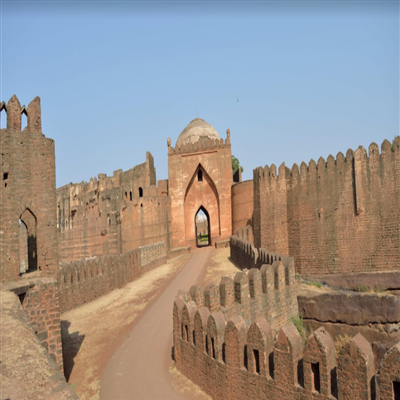
Bidar Fort
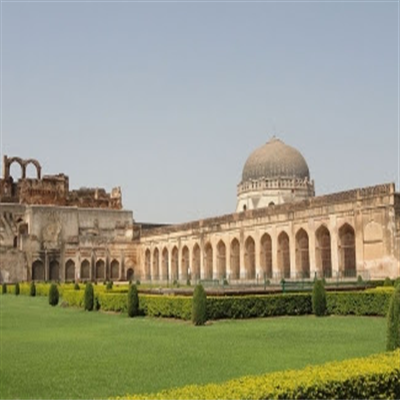
Rangeen Mahal

Rangeen Mahal with the colors still intact
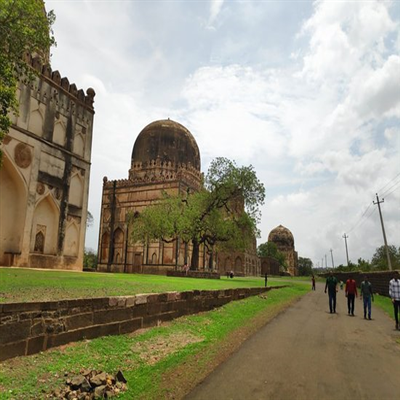
The Brahmani Tombs
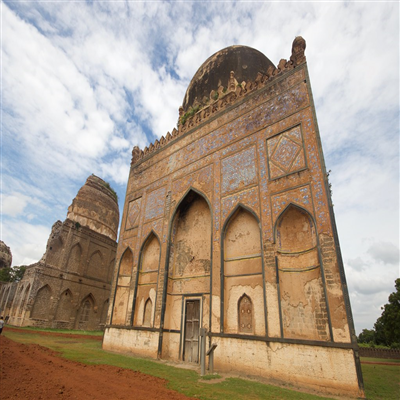
The Brahmani Tombs
.jpg)
The Brahmani Tombs
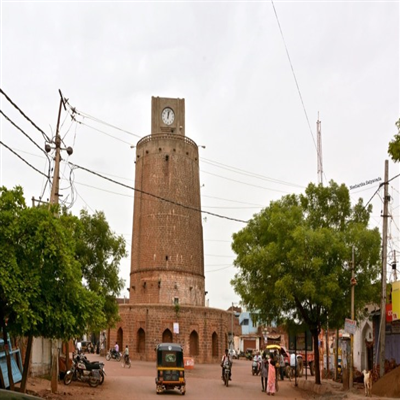
Chaubara Bidar
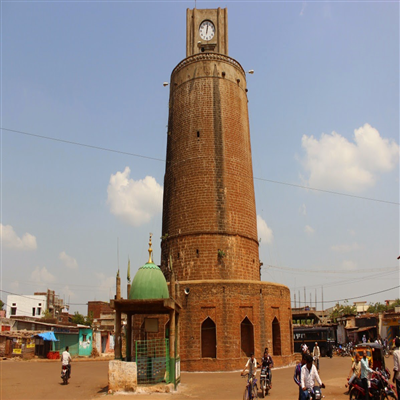
The Chaubara, Bidar
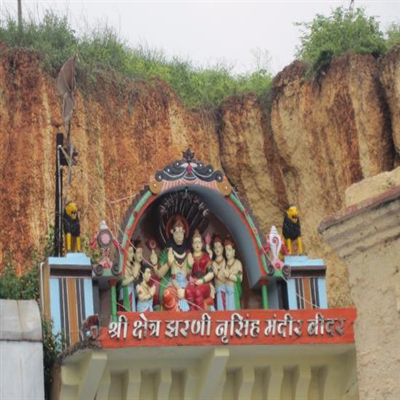
Narasimha Jhira cave temple
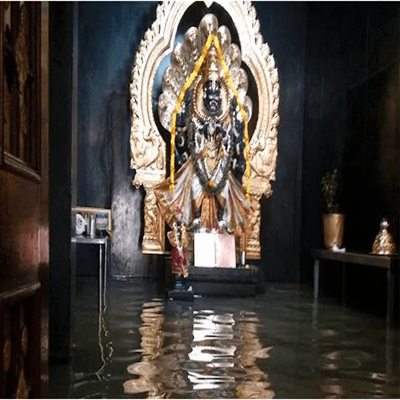
Narasimha Jhira cave temple diety
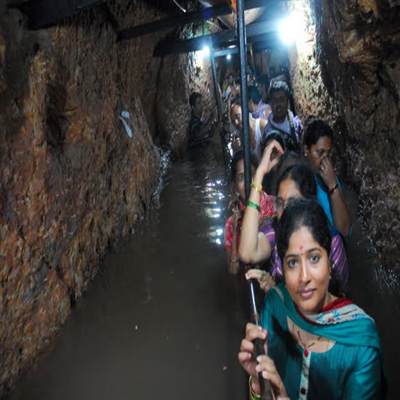
People wading in water to view the deity
Day : 2 - Gulbarga city
Halt C1 - Gulbarga, Karnataka, India
Distance from days start -97 Kms.
Activities - Gulbarga fort, Khwaja Bande Nawaz Dargha, Juma Masjid, Saat Gumbaz
Factors at the Halt include : Spiritual.
Night stay at D2 - Vijayapura, Karnataka, India
Distance from days start -226 Kms.
Halt D2 - Vijayapura, Karnataka, India
Distance from days start -226 Kms.
Activities - Visit Gagan Mahal, Visit Bara Kaman, Visit Jal Mahal
Factors at the Halt include : Cultural / History.
Gulbarga city is about 2.5 hours drive from Bidar and the city is famous for architectural marvels built during the Bahamani Kingdom rule. In Gulbarga we shall visit the Gulbarga fort first. It was built to commemorate the establishment of the dynastic rule of the Bahmani kingdom at Gulbarga fort between 1327 and 1424. It remained the capital of the Bahmani Kingdom till 1424 where after the capital was shifted to Bidar Fort. The Jama Masjid was built, within the fort, in 1367, which is a unique structure built in Persian architectural style, fully enclosed, with elegant domes and arched columns, which is unlike any other mosque in India. Then we shall visit the Haft Gumbaz, a group of tombs of the Bahmani dynasty. Built during the 14th and 15th centuries, the tombs are examples of early Indo-Islamic architecture. There are seven tombs in total, with four being tombs of the rulers of the Bahmani dynasty. The tomb complex is a monument of national importance, maintained by the Archeological Survey of India. The tomb complex is part of the "Monuments and Forts of the Deccan Sultanate", which is an ensemble of various structures added to the tentative list of the UNESCO World Heritage Sites. We can also have a quick look at the famous Bande Nawaz Darga which is quite unique in its architectural style. After visiting the sites in Gulbarga we can have lunch from the city before heading off the Vijaypura, or Bijapur as it was popularly known. Bijapur is 3.5 hours drive from Gulbarga. On reaching Bijapur if time permits we can visit Gagan Mahal, Bara Karman, and Jal Mahal this day itself. If not these would need to be pushed to the next days already packed sight seeing list.
Media and additional information available for the day's itinerary.
![]()
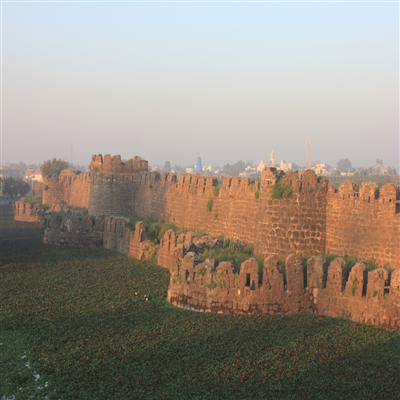
Gulbarga Fort
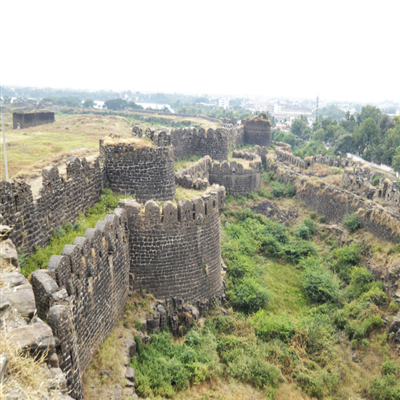
Gulbarga Fort

Haft Gumbaz
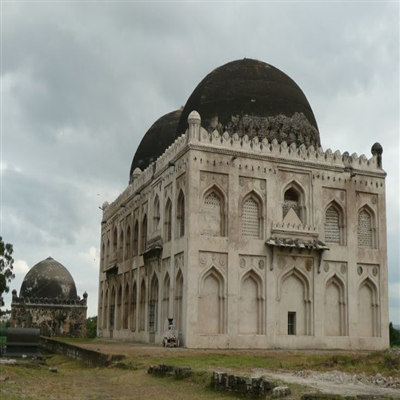
Haft Gumbaz
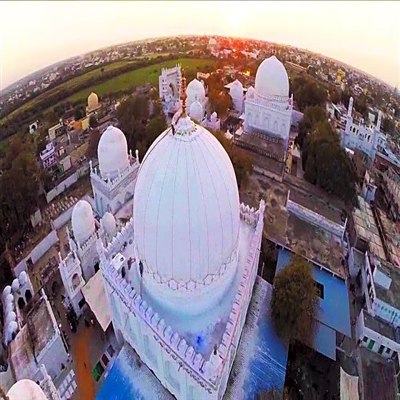
Khwaja Bande Nawaz Dargah

Khwaja Bande Nawaz Dargah
.jpg)
Khwaja Bande Nawaz Dargah
Day : 3 - A day in Bijapur
Night stay at E1 - Vijayapura, Karnataka, India
Distance from days start -0 Kms.
Halt E1 - Vijayapura, Karnataka, India
Distance from days start -0 Kms.
Activities - Visit Gol Gumbaz Monument, Bijapur Fort, Visit Ibrahim Rauza, Visit Mehtar Mahal, Visit Gagan Mahal, Visit Saath Kabar, Visit Sangeeth Nari Mahal, Jamia Masjid
Factors at the Halt include :
On the Day 3 we shall explore the historical marvels of the Bijapur city, officially known as Vijayapura now. The city is well known for its historical monuments of architectural importance built during the rule of the Adil Shahi dynasty. The city was established in the 10th–11th centuries by the Kalyani Chalukyas and was known as Vijayapura (City of victory). The city was passed to Yadavas after Chalukya's demise. In 1347, the area was conquered by the Bahmani Sultanate. After the split of the Bahmani Sultanate, the Bijapur Sultanate ruled from the city. Relics of the Sultanates' rule can be found in the city, including the Bijapur Fort, Bara Kaman, Jama Masjid, and Gol Gumbaz. To begin exploring the city we shall start with the most marvelous monument The Gol Gumbaz. Gol Gumbaz is the tomb of king Mohammed Adil Shah, Adil Shahi Dynasty. Construction of the tomb, located in Bijapur , Karnataka, India, was started in 1626 and was completed in 1656. The circular dome of the tomb is uniquely constructed by implementing highest precision of accoustics knowledge and principles surprisingly available even during that era. Even a slight whisper by someone standing in its gallery can be heard everywhere else in the gallery, and if somebody claps, the sound of it echoes several times. After the Gol Gumbaz we can visit the Bijapur Fort. Bijapur fort has a plethora of historical monuments of architectural importance built during the rule of Adil Shahi dynasty. The Adil Shahi Sultans who ruled for nearly 200 years in Bijapur had expended their utmost authority, almost exclusively, on architecture and the allied arts, each Sultan endeavored to excel his predecessor in the number, size, or splendor of his building projects. The rich history of the fort, the citadel, and other structures is subsumed in the history of Bijapur city starting right from the 10th century AD. The fort precinct is studded with the historical fort, palaces, mosques, tombs and gardens built by the Adil Shahis with their deep interest in architecture (in Persian, Ottoman Turkish and the allied arts. Some ruins of ancient temples, predating the Adilshahi period, are also seen. The most striking structures, in the order of their importance, are the Citadel or Arkilla, the Jamia Masjid (or Jumma masjid), the Gagan Mahal palace, the tomb of Ali Rauza or Ibrahim Roza (tomb of Ibrahim Adil Shah I), Chand Bawdi or Taj Bavdi (a large well), Mahatar Mahal (Dilkusha Mahal), Malikah-e-Jahan Mosque, Jal Mahal, and also an innocuous well in the vicinity of the fort with a legend of a tragedy linked to a brave but jealous general of the dynasty. It is said that the Adilshahis, during their reign of 200 years, built over 50 mosques, 20 tombs and 20 palaces. Bijapur has, therefore, been called as Agra of South India. Within the premises is another wonderful monument, the Ibrahim Rauza is a beautiful memorial tomb that is believed to have inspired the Taj Mahal. The meaning of the word Rauza is tomb, hence the name. It houses the tomb of Ibrahim Adil Shah II of the Adil Shah dynasty and his wife Taj Sultana. Visiting the fort and the monuments in and around it should take up the whole of the first half of the day or probably even more. In any case second half of the day we can visit as special sight called Saath Kabar, or 60 graves well technically it is 63 graves in actual numbers. This grave site tells the story of the 63 wives of Afzal Khan, the army chief of Adil Shahi 11 who was murdered by him. The tale was set in the 17th century where a bitter war was fought between Chatrapathi Shivaji and Adil Shah 11. An astrologer apparently predicted that Afzal Khan would lose the battle and he would not survive the war. Angry, jealous and possessive, the commander decided that his wives would be killed by his own hand before he died so that they would not remarry. So he led these innocent women to the spot and pushed them into a well and killed them. And these are the graves of the women murdered by Afzal Khan. The locals say the entire place is haunted and apparitions of the dead wives are visit sometimes even during the daytime. Anyhow this destination is a must visit while visiting the city. Then we have to visit the Bara Kaman which is the unfinished mausoleum of Ali Adil Shah II of Bijapur. Ali Adil Shah of the Adil Shahi dynasty wanted to build a mausoleum of unmatched architectural quality. It was planned that twelve arches would be placed vertically as well as horizontally surrounding the tomb of Ali Adil Shah. However, for unknown reasons the work on the structure was left incomplete: only two arches were raised vertically. Rumour has it that the construction of the mausoleum was stopped because once completed its shadow would touch the Gol Gombaz. Nowadays the remains of the twelve horizontally placed arches can still be seen. Then there is Sangeeth Nari Mahal. Built in the 16th century, the palace was used for celebration and parties.The Mahal is currently in ruins but the structure remains strong and steady and is definitely worth visiting while in Bijapur.
Media and additional information available for the day's itinerary.
![]()

The Gol Gumbaz
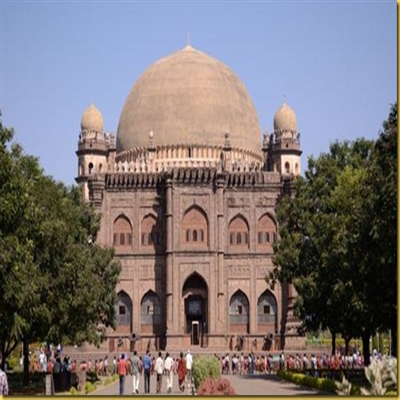
The Gol Gumbaz
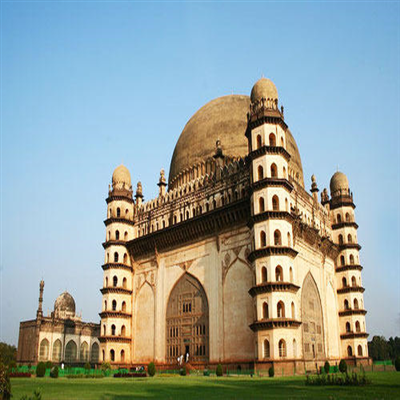
The Gol Gumbaz
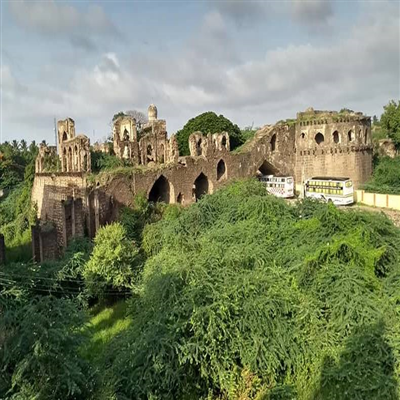
Bijapur Fort walls

Bijapur fort entry
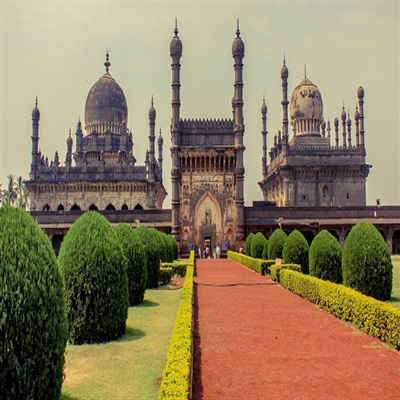
Ibrahim Rauza
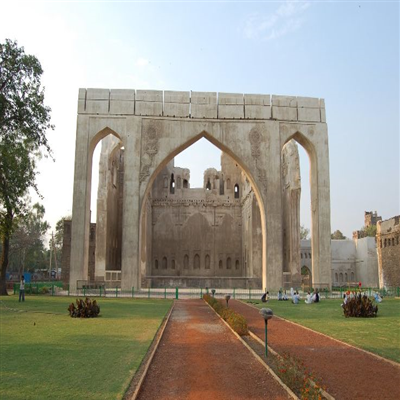
Gagan Mahal
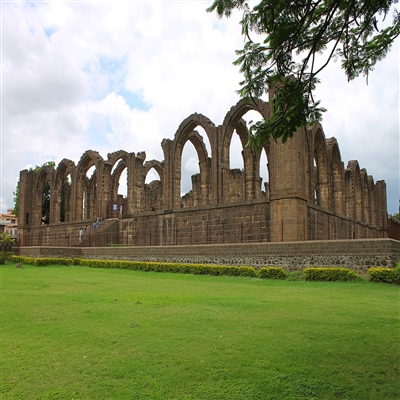
Baara Kaman
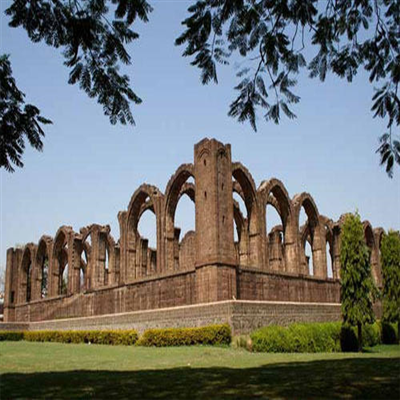
Baara Kaman
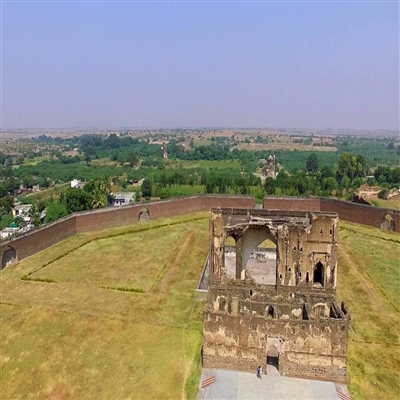
Sangeet Nari Mahal
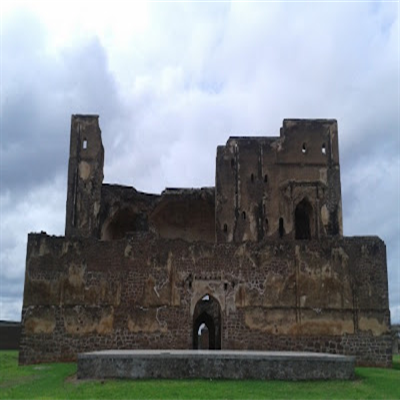
Sangeet Nari Mahal
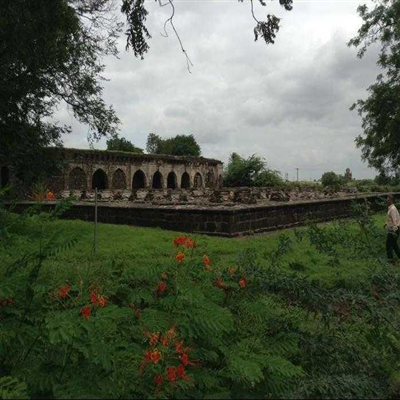
Saath Kabar

Saath Kabar
Day : 4 - Unesco Heritage sites
Night stay at F1 - Badami, Karnataka, India
Distance from days start -100 Kms.
Star Rating of Hotel :



Halt F1 - Badami, Karnataka, India
Distance from days start -100 Kms.
Activities - Visit Badami Cave temples, Visit Pattadakal temples and monuments, Visit Aihole temple
Factors at the Halt include : Cultural / History.
A 2 and half hour drive from Vijaypura will take us to the famous Unesco heritage sites of Pattadakal and Badami cave temples and Aihole. We shall begin with Badami cave temples. The Badami cave temples are a complex of Hindu and Jain cave temples located in Badami, Karnataka. The caves are important examples of Indian rock-cut architecture, especially Badami Chalukya architecture, and the earliest date from the 6th century. Badami was the capital of the early Chalukya dynasty, which ruled much of Karnataka from the 6th to the 8th century. Badami cave temples are situated on the west bank of a man-made lake ringed by an earthen wall with stone steps; it is surrounded on the north and south by forts built in later times. Next in line is Pattadakal, a complex of 7th and 8th century CE Hindu and Jain temples. Located on the west bank of the Malaprabha River, this UNESCO World Heritage site is 23 km from Badami and about 9.7 km from Aihole, both of which are historically significant centres of Chalukya monuments. The monument is a protected site and is managed by the Archaeological Survey of India. UNESCO has described Pattadakal as "a harmonious blend of architectural forms from northern and southern India" and an illustration of "eclectic art" at its height. The Hindu temples are generally dedicated to Shiva, but elements of Vaishnavism and Shaktism theology and legends are also featured. set midst sandstone mountains and Malaprabha river valley. In total, there are over 150 Hindu, Jain, and Buddhist monuments, and archaeological discoveries, dating from the 4th to 10th century CE, in addition to pre-historic dolmens and cave paintings that are preserved at the Pattadakal-Badami-Aihole site. Next in line we shall move on to Aihole, a historic site of ancient and medieval era Buddhist, Hindu and Jain monuments in Karnataka that dates from the sixth century through the twelfth century CE. Most of the surviving monuments at the site date from the 7th to 10th centuries. Located around an eponymous small village surrounded by farmlands and sandstone hills, Aihole is a major archaeological site featuring over one hundred and twenty stone and cave temples spread along the Malaprabha river valley. Over one hundred Aihole temples are Hindu, a few are Jain and one is Buddhist. These were built and coexisted in close proximity. The site is spread over about 5 square kilometres. After visiting the monuments we shall retire for the day in a resort in Badami.
Media and additional information available for the day's itinerary.
![]()
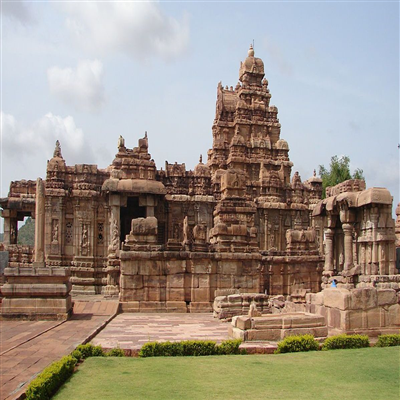
Virupaksha Temple Pattadakal
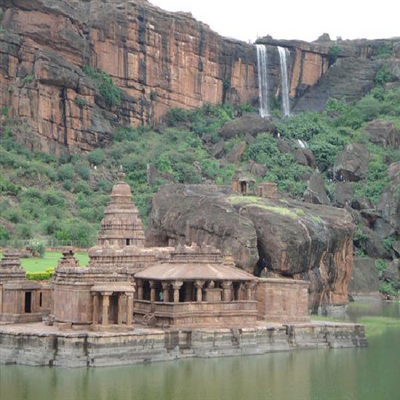
Badami Cave Temples
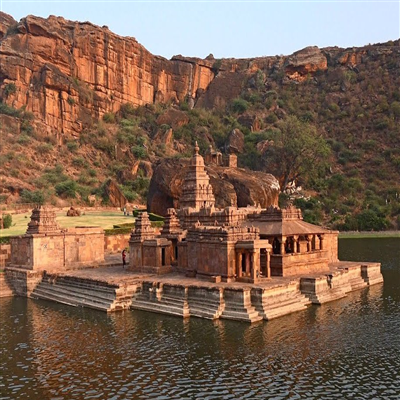
Badami Cave Temples
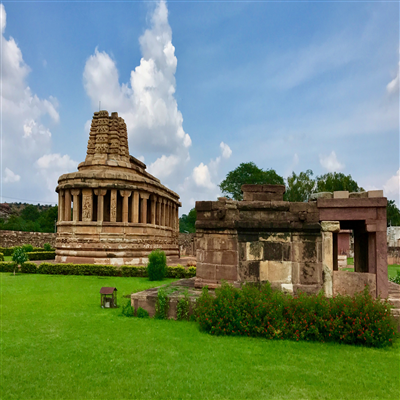
Aihole Durga Temple
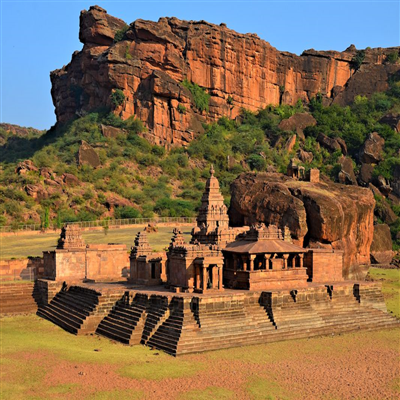
Badami spectacular temple monuments
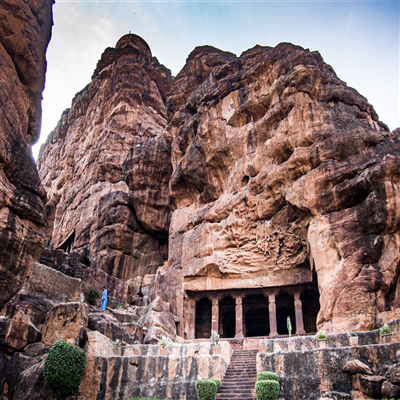
Badmi Caves
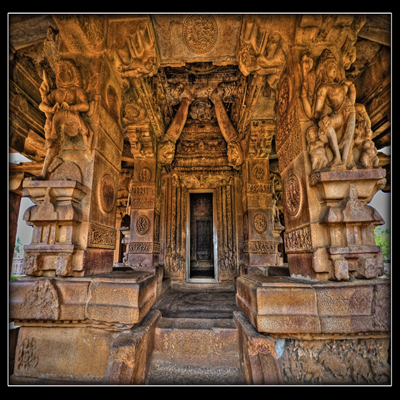
Interiors of Aihole Durga Temple
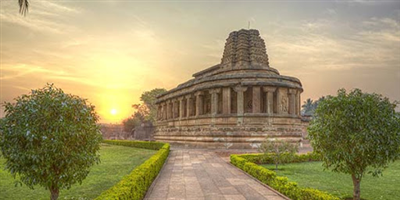
Magnificient View of Aihole Temple
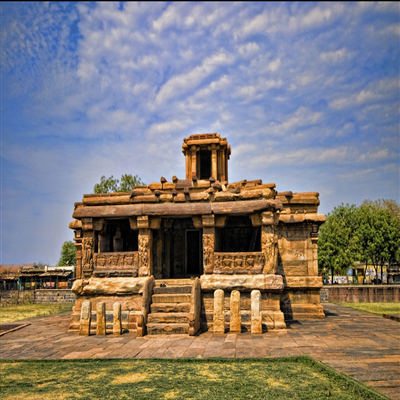
LadKhan Temple Aihole
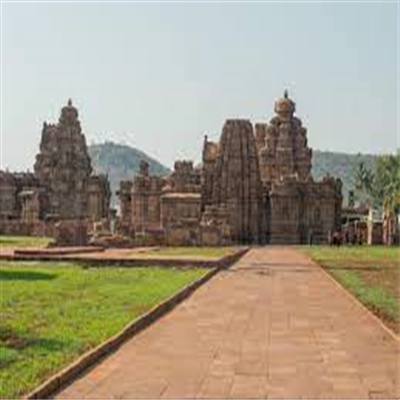
Pattadakal
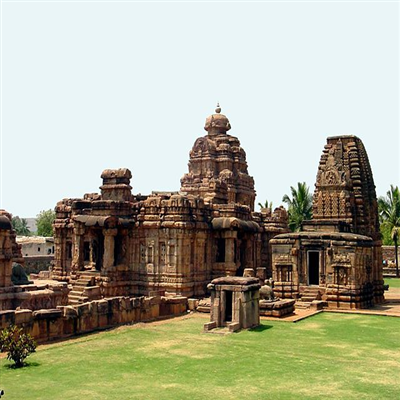
More monuments from Pattadakal
Day : 5 - The glorious Hampi
Night stay at G1 - Hampi, Karnataka, India
Distance from days start -106 Kms.
Star Rating of Hotel :




Halt G1 - Hampi, Karnataka, India
Distance from days start -106 Kms.
Activities - Visit Hampi Monuments
Factors at the Halt include : Spiritual,Cultural / History.
The Vijayanagara heritage site of Hampi is a 3.5 hour drive away from Badami. On reaching Hampi we shall have lunch and then check into the hotel. In the afternoon we shall set out to visit the ruins of the ancient Vijayanagar city. Group of Monuments at Hampi, is a UNESCO World Heritage Site. Hampi was the capital of the Vijayanagara Empire in the 14th century. Chronicles left by Persian and European travellers, particularly the Portuguese, say that Hampi was a prosperous, wealthy and grand city near the Tungabhadra River, with numerous temples, farms and trading markets. By 1500 CE, Hampi-Vijayanagara was the world's second-largest medieval-era city after Beijing, and probably India's richest at that time, attracting traders from Persia and Portugal. The Vijayanagara Empire was defeated by a coalition of Muslim sultanates; its capital was conquered, pillaged and destroyed by sultanate armies in 1565, after which Hampi remained in ruins. Hampi's ruins are spread over 4,100 hectares (16 sq mi) and it has been described by UNESCO as an "austere, grandiose site" of more than 1,600 surviving remains of the last great Hindu kingdom in South India that includes "forts, riverside features, royal and sacred complexes, temples, shrines, pillared halls, mandapas, memorial structures, water structures and others". Today the ruins of the ancient city is spread in an area of approximately 28 kms and we shall drive through the entire region quite extensively to give you a good insight of the place and the monuments.
Media and additional information available for the day's itinerary.
![]()
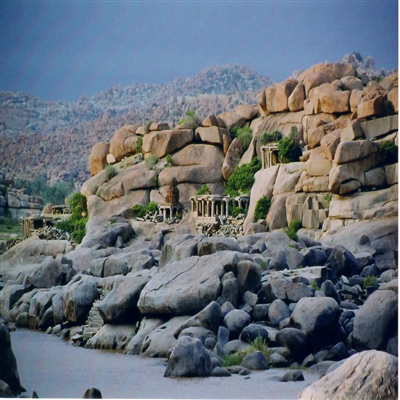
Riverside ruins in Hampi
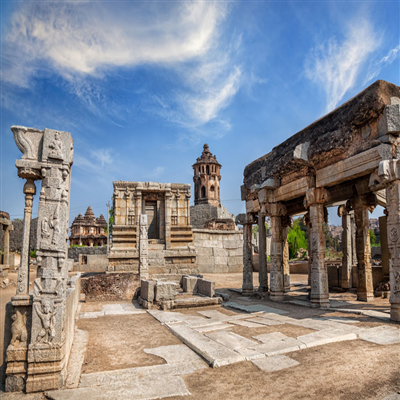
Hampi Ruins

Spectacular sites in Hampi
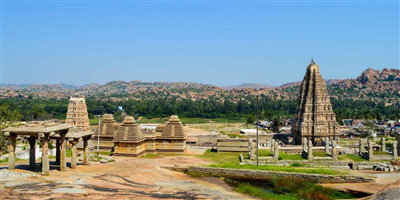
Hampi Temple

More from Hampi Temples
Day : 6 - Belum Caves and Kurnool
Halt H1 - Belum Caves, Opposite Indian Oil Petrol Pump, Kolimigundla, Andhra Pradesh, India
Distance from days start -179 Kms.
Activities - Visit Belum Caves
Factors at the Halt include :
Night stay at I2 - Kurnool, Andhra Pradesh, India
Distance from days start -177 Kms.
Halt I2 - Kurnool, Andhra Pradesh, India
Distance from days start -177 Kms.
Activities - Visit Kurnool Fort
Factors at the Halt include :
Leaving from Hampi we shall head out to the famous Belum caves which is about 5 and half hour drive. The Belum Caves is the largest and longest cave system open to the public on the Indian subcontinent, known for its speleothems, such as stalactite and stalagmite formations. The Belum Caves have long passages, galleries, spacious caverns with fresh water and siphons. This cave system was formed over the course of tens of thousands of years by the constant flow of underground water from the now-disappeared river Chitravathi. The cave system reaches its deepest point of 46 m (151 ft) from entrance level, at the point known as Pataalaganga. Belum Caves have a length of 3,229 m, making them the second largest caves on the India. Belum is part of a larger complex of caves carved out of the limestone deposits in the Erramalai region. Other caves include the Billasurgam caves, Sanyasula caves, Yaganti caves, Yerrajari caves, and the Muchchatla Chintamanu caves. Belum Caves are geologically and historically important caves. There are indications that Jains and Buddhists monks occupied these caves centuries ago. Many Buddhists relics were found inside the caves. Archaeological survey of India (ASI) also found remnants of vessels of the pre-Buddhist era and dated the remnants of these objects to 4500 years BCE. After visiting the Belum caves we shall further head northwards towards the city of Kurnool. At Kurnool we have 1 important sight to visit before checking into our hotel in the city and that is the Kurnool fort or the Konda Reddy Fort. Konda Reddy Buruju is an imposing structure situated in the heart of Kurnool City. The construction of the fort dates back to the 12th century when the city of Kurnool was used as a base on Tungabhadra river crossing. Kurnool was occupied by Vijayanagara ruler Devaraya II and Achyutaraya who succeeded Krishnadevaraya built the initial fort between 1530 and 1542. The fort has different gateways and bastions. The gateways of the fort were constructed by Gopala Raja, the grandson of Rama Raja of Talikota Vijayanagara kings in the 17th century. The fort is named after Konda Reddy, the last ruler of Alampur who was imprisoned in the fort by the Kurnool Nawab in the 17th century. Locals and legend state that Konda Reddy was under attack, and used the tunnels that the fort housed to escape. Konda Reddy eventually escaped from the fort, but had to loose his territory to Golconda Nawabs. The tunnels are now locked and closed off from the public, but the fort is open to touring. There is a tunnel that runs for 25 kms from this fort which opens out at Alampur on the other side of the river Tungabhadra.
Media and additional information available for the day's itinerary.
![]()
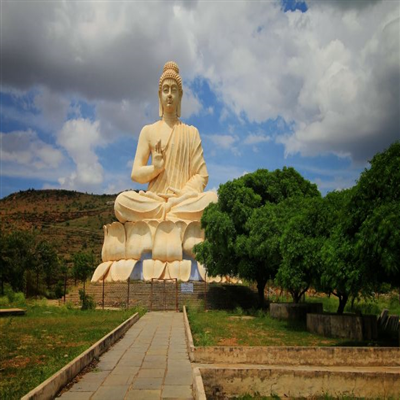
Buddha statue outside Belum Caves
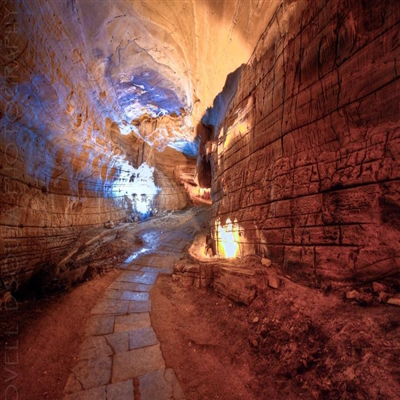
Belum Caves

Belum Caves
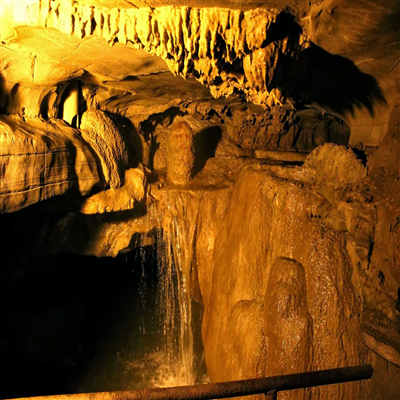
Belum Caves
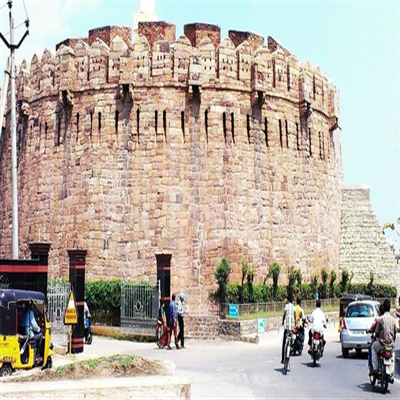
Kurnool Fort
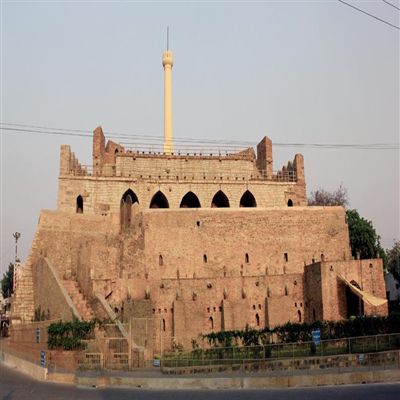
Kurnool Fort
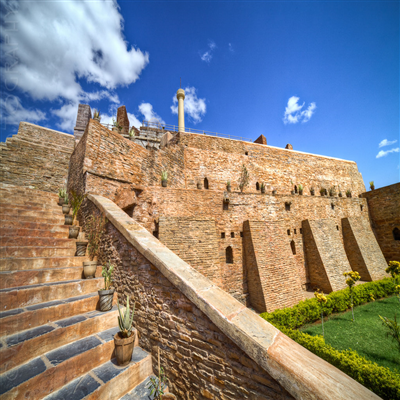
Kurnool Fort
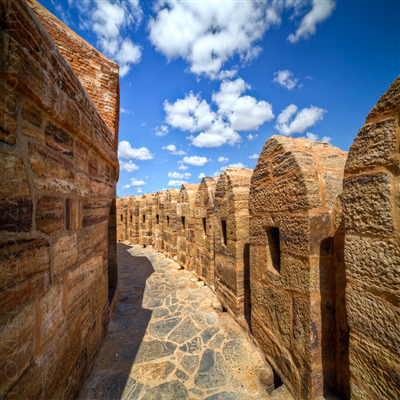
Kurnool Fort
Day : 7 - Nizams Hyderabad
Night stay at J1 - Hyderabad, Telangana, India
Distance from days start -178 Kms.
On day 7 we shall return to our origin city of Hyderabad, the city of pearls. The trip from Kurnool to Hyderabad takes about 3.5 hours and we can expect to reach Hyderabad city shortly after the lunch time. We shall begin with exploring the Hyderabadi Biryani from the restaurant that is iconic of the cuisine in Hyderabad which is the original 'Paradise Biryani' in Secunderabad. After that we shall set out on an hours drive to reach the Golconda Fort just outside the city. Golconda Fort was the early capital city of the Qutb Shahi dynasty (c. 1512–1687). Because of the vicinity of diamond mines, especially Kollur Mine, Golconda flourished as a trade centre of large diamonds, known as the Golconda Diamonds. The region has produced some of the world's most famous diamonds, including the colourless Koh-i-Noor (now owned by the United Kingdom), the blue Hope (United States), the pink Daria-i-Noor (Iran), the white Regent (France), the Dresden Green (Germany), and the colourless Orlov (Russia), Nizam and Jacob (India), as well as the now lost diamonds of Florentine Yellow, Akbar Shah and The Great Mogul. The Golconda Fort used to have a vault where the famous Koh-i-Noor and Hope diamonds were once stored along with other diamonds.
Golconda is renowned for the diamonds found on the south-east at Kollur Mine near Kollur, Guntur district, Paritala and Atkur in Krishna district and cut in the city during the Kakatiya reign. At that time, India had the only known diamond mines in the world. Golkonda was the market city of the diamond trade, and gems sold there came from a number of mines. The fortress-city within the walls was famous for diamond trade. The fort was expanded during Qutb Shahi sultans into the present structure, a massive fortification of granite extending around 5 km in circumference. It remained the capital of the Qutb Shahi dynasty until 1590 when the capital was shifted to Hyderabad. The Qutb Shahis expanded the fort, whose 7 km outer wall enclosed the city.The fort has three levels and it was used as watch tower in 17th and 18th centuries. The ground level is closed for visitors, while the visitors can climb to the first and second floors and get a glimpse of the history.
Media and additional information available for the day's itinerary.
![]()
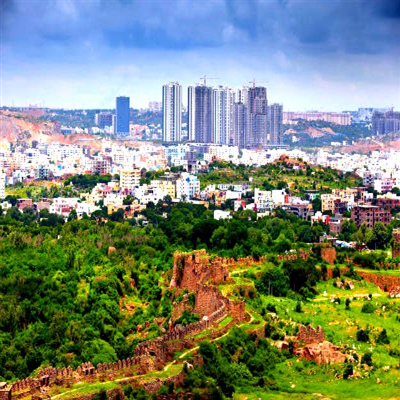
Hyderabad city view from Golconda Fort
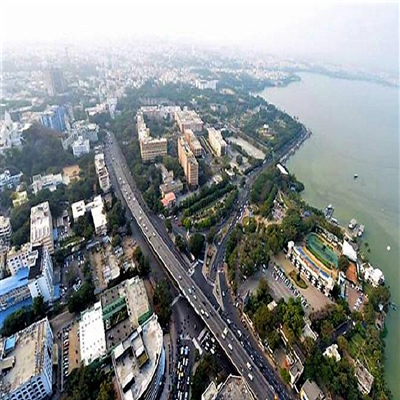
Hyderabad city aerial view
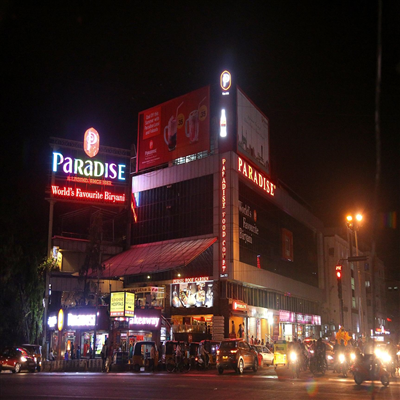
Paradise Biryani
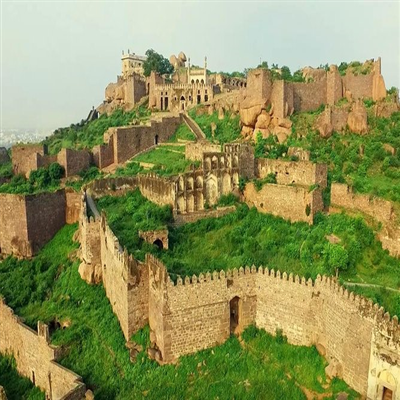
Golconda Fort
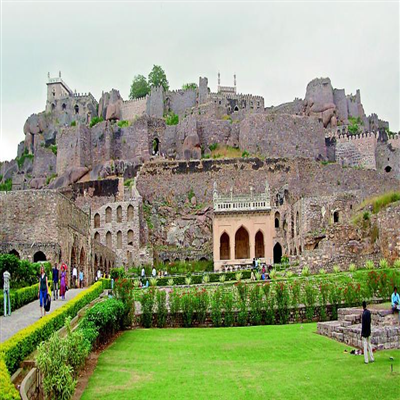
Golconda Fort
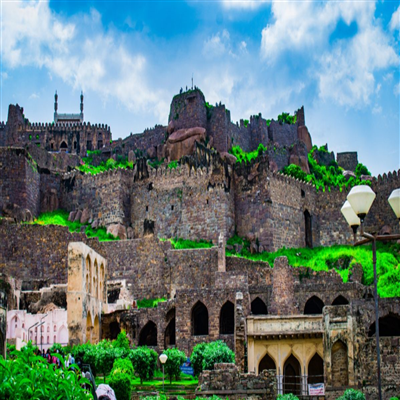
Golconda Fort
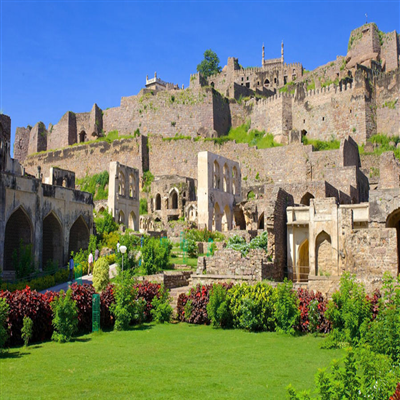
Golconda Fort
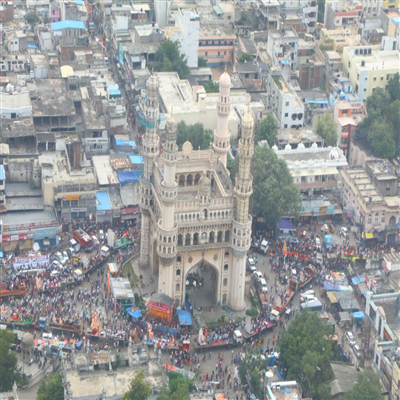
Charminar Aerial view
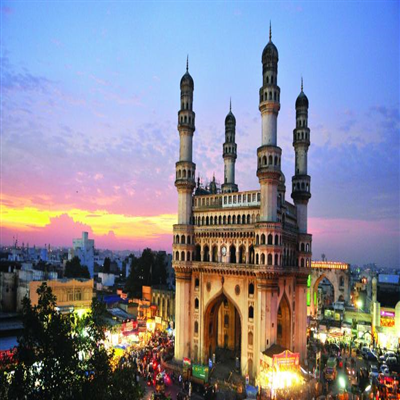
Charminar
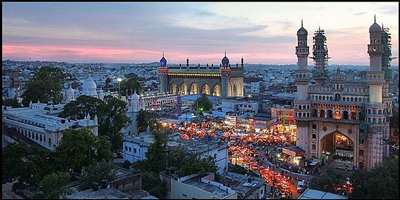
Around Charminar
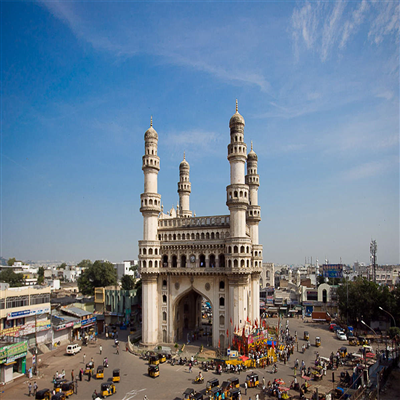
The Charminar

Boating in Hussain Sagar lake
Day : 8 - The last day of the trip
The last day of the trip can be spend by visiting the hot spots of the city and by doing your shopping from Hyderabad. We shall also visit the upmarket areas of Jubilee hills and Banjara Hills. When its time for your return flights home we can head to the airport.
![]()